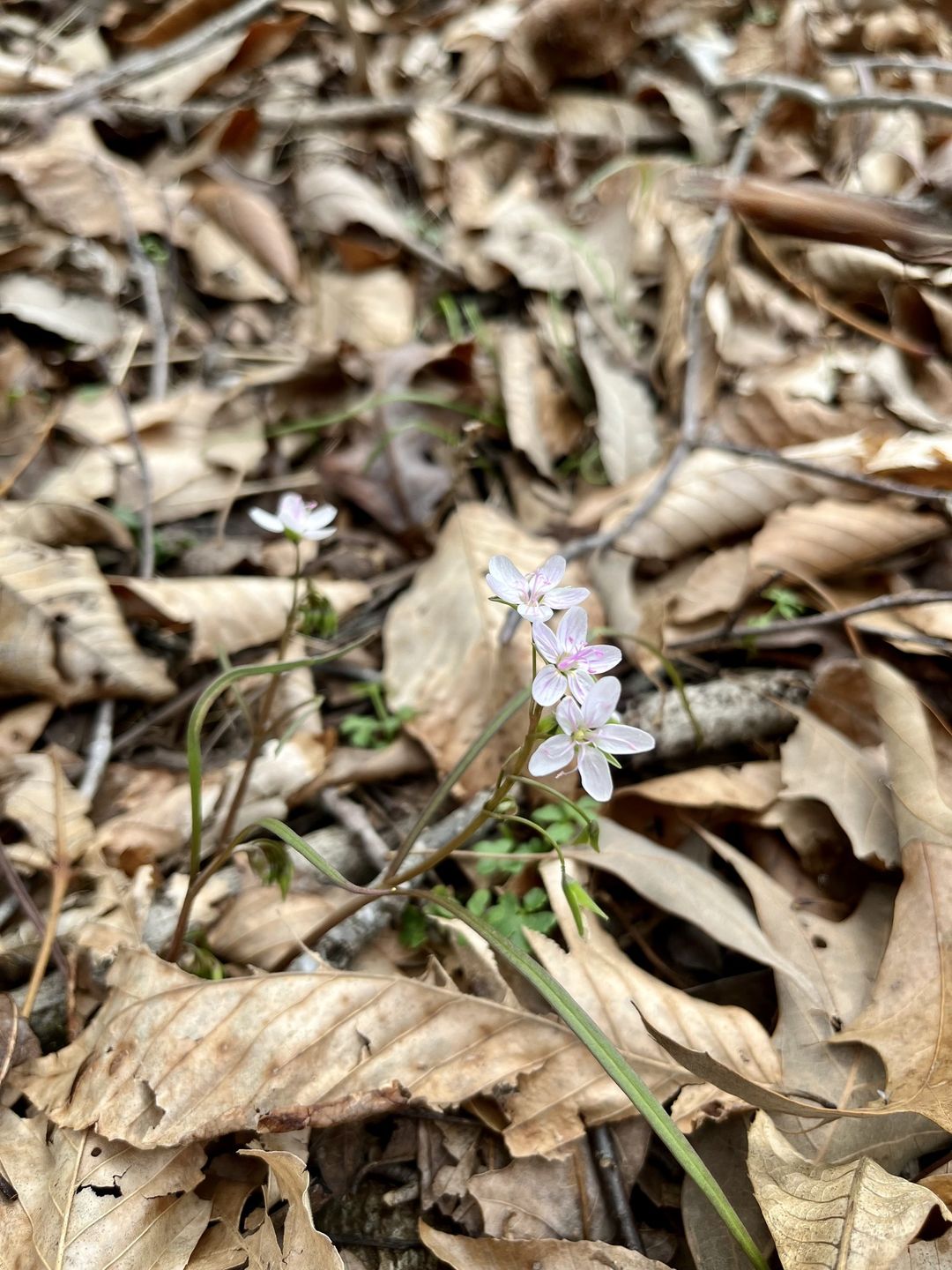 Virginia beauty (Claytonia virginica) blooming in the woods reminds us winter is spinning away. Shelby Lyn Sanders
Virginia beauty (Claytonia virginica) blooming in the woods reminds us winter is spinning away. Shelby Lyn Sanders
First probing plants and flowers are a sign that winter always ends
There are few who would count winter as their favored time of year, and it is true that one must look harder to find the beauty in a landscape that by all accounts appears forlorn and void of life. But with about a month until the calendar tells us that it is officially spring, winter’s grip is yielding to renewal. It is a time of year that quickens the heartbeat of every naturalist.
The calls of golden-crowned kinglets begin to intermingle with those of the spring peepers, a frog so tiny that it is hard to imagine them capable of such emphatic emissions of sound, and last year’s marcescent American beech leaves preside over persistent, unfurling green lives that would be missed were it not for a careful eye and a curious heart.
The wait has been long, but worth it. With the first sighting of a blooming Virginia spring beauty, the ephemeral wildflower season begins, marking the start of another growing season, another months-long love story spent in awe of nature until the last asters of fall have gone to seed.
For every thing there is a season, and for lovers of the wild, that season is all of them.
 A bloodroot (Sangiuinaria canadensis) bloom is seen here in Norris Dam State Park on Feb. 19. John Johnson
A bloodroot (Sangiuinaria canadensis) bloom is seen here in Norris Dam State Park on Feb. 19. John Johnson